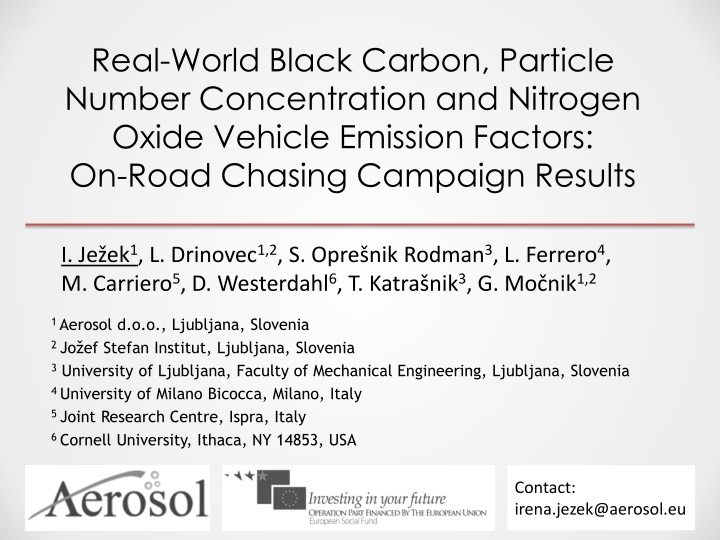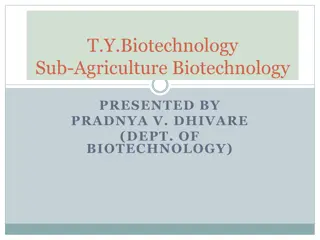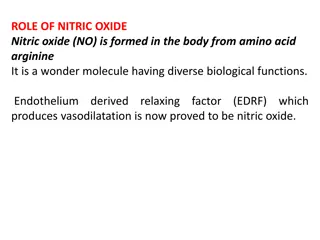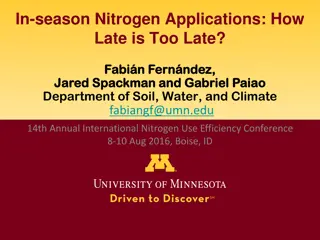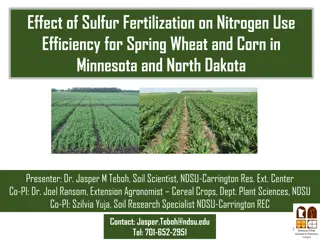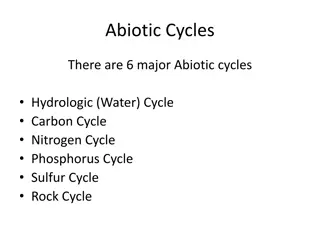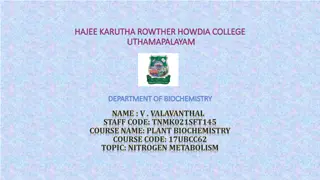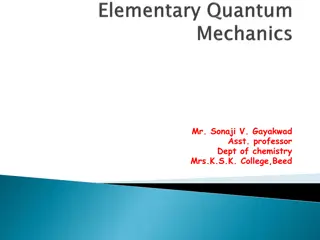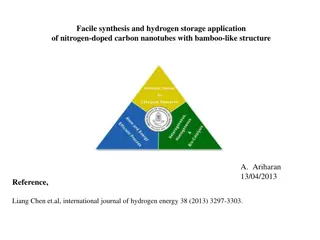Real-World Black Carbon & Nitrogen Oxide Vehicle Emission Factors Study
This study presents real-world data on black carbon (BC) and nitrogen oxide (NO) vehicle emission factors gathered through on-road chasing campaigns. The research explores the influence of dilution and vehicle performance on emission factor calculations, with a focus on measuring emissions from vehicles using Portable Emissions Measurement Systems (PEMS). The results provide insights into EF determinations and the distribution of EF values for different vehicles, shedding light on the impact of vehicle age and super emitters on fleet emissions.
Download Presentation

Please find below an Image/Link to download the presentation.
The content on the website is provided AS IS for your information and personal use only. It may not be sold, licensed, or shared on other websites without obtaining consent from the author.If you encounter any issues during the download, it is possible that the publisher has removed the file from their server.
You are allowed to download the files provided on this website for personal or commercial use, subject to the condition that they are used lawfully. All files are the property of their respective owners.
The content on the website is provided AS IS for your information and personal use only. It may not be sold, licensed, or shared on other websites without obtaining consent from the author.
E N D
Presentation Transcript
Real-World Black Carbon, Particle Number Concentration and Nitrogen Oxide Vehicle Emission Factors: On-Road Chasing Campaign Results I. Je ek1, L. Drinovec1,2, S. Opre nik Rodman3, L. Ferrero4, M. Carriero5, D. Westerdahl6, T. Katra nik3, G. Mo nik1,2 1 Aerosol d.o.o., Ljubljana, Slovenia 2 Jo ef Stefan Institut, Ljubljana, Slovenia 3University of Ljubljana, Faculty of Mechanical Engineering, Ljubljana, Slovenia 4 University of Milano Bicocca, Milano, Italy 5 Joint Research Centre, Ispra, Italy 6 Cornell University, Ithaca, NY 14853, USA Contact: irena.jezek@aerosol.eu
Outline On-road chasing method tests: Influence of dilution on EF calculation Influence of vehicle performance on the EF distribution On-road chasing measurement campaign first on-road chasing measurements of cars sampled vs. European fleet statistic influence of vehicle age on EFs contribution of super emitters to fleet emissions 2
Emission factor (EF) determination t 2 ([P] - t [P] )dt 0 20 40 60 80 100 t 1 t = EF w 1 CO2 bg + bg bg - P c t 460 CO2 (ppm) 2 ([CO ] - t [CO ] ) dt 2 2 t 1 t 440 1 420 wc carbon fraction in fuel 400 EF distribution for a single chasing event BC bg + bg bg - 25 20 BC (mg/m3) 15 10 5 0 PN bg + bg bg - 120 PN (1000#/cm3) 90 60 30 0 0 20 40 60 80 100 Time [s] 3 Je ek et al., AMT, 2015
On-road emission factor measurement tests Chasing a vehicle equipped with Portable Emissions Measurement System (PEMS) Influence of dilution Relate vehicle performance to measured BC EF Instruments: Mobile platform: Aethalometer AE33 (BC), Carbocap (CO2) Euro 3 van with PEMS: CO2, exhaust mass flowrate, engine rotational frequency, vehicle speed and position, outside air temperature The van equipped with PEMS on the old part of the Monza F1 race track (Italy) 4
Results: Influence of dilution on EF 0 50 100 150 200 250 300 350 400 Exhaust Mass Flow Rate (kg/hr) Ground Speed Exhaust Mass Flow Rate 80 400 Ground speed (km/h) 60 40 200 20 0 0 PEMS CO2 BC CO2 80 700 9 PEMS CO2 (%) 60 6 BC ( g/kg) CO2 (ppm) 600 40 3 0 500 20 -3 0 400 100000 DR EF BC 10000 10 EF BC (g/kg) 1000 DR 100 1 10 1 0 50 100 150 200 250 300 350 400 5 Je ek et al., AMT, 2015 Time (s)
EF distribution and vehicles performance 300 EF BC (g/kg) - max - 99th - 90th - 75th - 50th - 25th - 10th - min 5.16 250 3.83 /Percentile\ 200 1.65 150 M (Nm) 1.15 100 0.73 0.49 50 0.30 0 0.15 1000 2000 3000 a) n (rpm) Torque (M) - engine s ability to work (Heywood , 1988) n crankshaft rotational frequency In pthpercentilep% of the sample values are less than the pth percentile and (100 p)% are greater 6
On-road EF measurement campaign We measured CO2, BC, PN and NOx concentrations. We obtained registry information on vehicles (fuel, age, category, weight, engine displacement ) Comparison of sampled fleet statistic to Eurostat data The total of 139 vehicles measured and distributed to three vehicle categories : 68 cars with compression ignition engine - diesel cars; 24 cars with spark ignition engine - gasoline cars; 47 goods vehicles (included light goods vehicles N2, busses M2 and M3, and heavy goods vehicles N3) 7
Representativeness of car fleet 10 years or over 42% 39% 50% 18% 27% 50% 16% From 5 to 10 years 28% 34% 25% 48% 47% 25% 49% From 5 to 2 years 19% 18% 15% 23% 29% 17% 29% Less than 2 years 11% 9% 9% 11% 7% 8% 6% Europe Slovenia Total Total Gasoline Diesel Total Gasoline Diesel This study % of diesel cars 34 36 68 Je ek et al., ACP, 2015 Europe Slovenia This study 8
Results: EURO3 EURO3 EURO4 EURO4 EURO5 EURO5 First on-road BC EFs for diesel cars Je ek et al., ACP, 2015 9
Effect of vehicle age Less than 5 years Euro 4 and 5 Between 5 and 10 Euro 3 10 and more Euro 2 or less The median BC EF of diesel cars that were in use for less than 5 years was reduced by a 60% compared to those in use for 5 10 years. No decrease in median BC EF of the goods vehicles. PN and NOx EF of goods vehicles were reduced by 52% and 67%, respectively. 10 Je ek et al., ACP, 2015
Comparing our results to other on-road studies Je ek et al., ACP, 2015 Study Study type Vehicle type EF BC (g kg-1) EF NOX (g kg-1) 34.5 (8.1 117.1) Shorter et al., 2005 Chasing a Diesel buses CRT 27.8 ( 6.3) Wang et al.,2012 Chasing b HGV Beijing 0.4 (0.2-0.8) 47.3 (38.1 - 62.5) HGV Chongqing 1.1 (0.7-1.6) 40.0 (31.7-48.1) Dallmann et al., 2011 Remote s. c HGV (2009) 1.07 0.18 25.9 1.8 HGV (2010) 0.49 0.08 15.4 0.9 Dallmann et al., 2013 Remote s. c HGV 0.62 0.17 Carslaw and Rhys- Tyler, 2013 Remote s. d Gasoline cars 5.34 (1.15 - 26.83) Diesel cars 16.37 (14.82 20.65) Van 18.1 (16.87 23.59) HGV (all) 37.88 (35.13 48.37) 0.35 (0.005 1.52) This study Chasing b Gasoline cars 6.74 (3.3 13.16) 0.92 (0.03 5.87) Diesel cars 15.47 (9.15 23.28) 0.56 (0.05 5.24) LGV 20.25 (11.84 28.22) 0.45 (0.04 11.01) HGV 29.6 (23.18 48.67) a mean and range in parenthesis; b median (1st and 3rd quartile); c mean 95% confidence interval; d emission ratios from Carslaw and Rhys- Tyler paper were converted to EFs using the same molecular weights and carbon fraction as in formula 1; presented are average values for all Euro standards in a group, in parenthesis are the smallest and largest mean value of emission standards. 11
Super emitters contributions to total fleet emissions Contribution of super emitters: 25% of vehicles was found to disproportionately contribute to the total fleet emissions 47% to 87%. 25% of emitting diesel cars contributed: 63% of BC, 61% of PN and 47% of NOx emissions 12 Je ek et al., ACP, 2015
Conclusions The first tests of the on-road chasing method. First reported BC EF for individual diesel cars measured in real driving conditions. Good agreement with the results of previous studies. The median BC EF of diesel cars that were in use for less than 5 years was reduced by a 60% compared to those in use for 5 10 years. No decrease in median BC EF of the goods vehicles. PN and NOx EF of goods vehicles were reduced by 52% and 67%, respectively. Simple and efficient methodology for monitoring emissions of the in-use vehicle fleet Identification of supper emitters Thank you for your attention! Contact: irena.jezek@aerosol.eu 13
